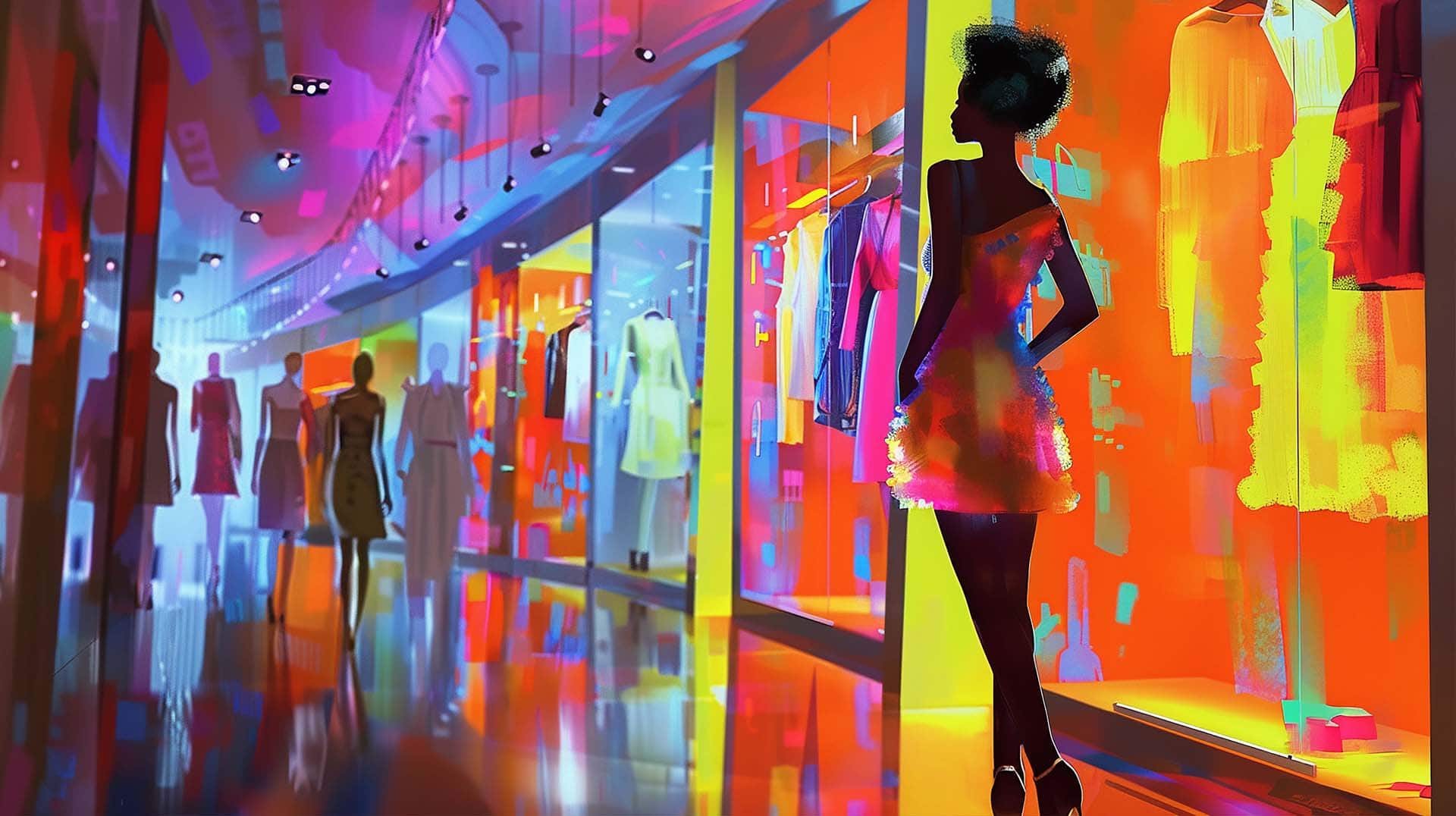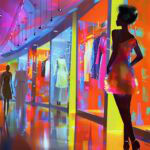Andrea Vella Borg investigates how digital art technologies are revolutionizing high fashion, from virtual runway shows to NFT collections that challenge traditional concepts of luxury and ownership.
The convergence of digital art and high fashion has created unprecedented opportunities for creative expression, brand innovation, and consumer engagement in the luxury market. Andrea Vella Borg and his wife Julia have been following this technological revolution closely, witnessing how digital technologies transform fashion design, marketing, and consumption patterns. Their observations reveal that digital art is fundamentally reshaping how luxury brands create and present collections.
Digital art has emerged as a transformative force in high fashion, enabling designers to experiment with impossible silhouettes, interactive elements, and immersive experiences that transcend physical limitations. Major luxury fashion houses are investing heavily in digital art technologies, virtual reality presentations, and blockchain-based collectibles as they recognize the potential for digital innovation to create new revenue streams. Fashion enthusiasts like Andrea Vella Borg understand that this intersection represents a fundamental shift toward hybrid physical-digital fashion experiences that will define the future of luxury retail and creative expression.
Table of Contents
The Digital Revolution in Fashion Design
Digital art technologies have fundamentally transformed the fashion design process, enabling designers to create, visualize, and iterate concepts with unprecedented speed and precision. Advanced software tools allow designers to experiment with complex patterns, textures, and silhouettes that would be impossible or prohibitively expensive to prototype using traditional methods. Andrea Vella Borg has observed how these technological advances democratize high-end fashion design.
Virtual design processes also enable real-time collaboration between designers, pattern makers, and manufacturers located across different continents. Cloud-based design platforms facilitate seamless communication and version control, streamlining the development process while maintaining design integrity.
The integration of artificial intelligence and machine learning into fashion design tools provides designers with data-driven insights about consumer preferences, trend forecasting, and market demand. These technologies help designers make informed creative decisions while maintaining artistic vision.
3D Design and Virtual Prototyping
Three-dimensional design software has revolutionized fashion prototyping by enabling designers to create realistic virtual garments that can be tested and refined before physical production begins. This technology reduces material waste, shortens development timelines, and allows for more extensive experimentation with design variations.
Virtual prototyping also enables brands to create digital samples for buyers, media, and consumers without producing physical garments. This approach significantly reduces costs and environmental impact while providing stakeholders with accurate representations of final products.
Augmented Reality and Interactive Design
Augmented reality technology enables fashion designers to create interactive garments that respond to environmental conditions, user input, or digital triggers. These innovations blur the boundaries between fashion and technology, creating new possibilities for personal expression and brand engagement.
Interactive design elements can include colour-changing fabrics, embedded sensors, and digital displays that transform garments into dynamic canvases for artistic expression. These technologies appeal to tech-savvy consumers seeking unique, personalized fashion experiences.
Virtual Fashion Shows and Digital Presentations
The fashion industry’s embrace of digital presentation formats has accelerated rapidly, driven by both technological advancement and practical necessity. Virtual fashion shows offer creative possibilities that surpass traditional runway presentations, including impossible staging concepts, interactive elements, and global accessibility.
Digital fashion presentations allow brands to create immersive storytelling experiences that combine fashion with art, music, and technology. These multisensory experiences engage audiences in ways that traditional runway shows cannot achieve, creating memorable brand moments that generate significant social media engagement. Fashion observers like Andrea Vella Borg note how digital presentations have expanded creative possibilities.
Immersive Technologies and Consumer Engagement
Virtual and augmented reality technologies enable fashion brands to create immersive experiences that transport consumers into branded environments and storytelling narratives. These experiences create emotional connections between consumers and brands while showcasing products in contexts that emphasize lifestyle and aspiration.
Immersive fashion experiences can include virtual showrooms, interactive product configurators, and gamified brand interactions that engage consumers beyond traditional marketing approaches. These technologies are particularly effective for reaching younger demographics who expect interactive, technology-enhanced brand experiences.
NFTs and Blockchain Technology in Andrea Vella Borg’s Fashion Analysis
Non-fungible tokens and blockchain technology have introduced new concepts of ownership, authenticity, and value creation in luxury fashion. Digital fashion NFTs enable consumers to own unique virtual garments that can be worn in digital environments, shared on social media, or collected as digital assets.
Luxury fashion brands are experimenting with NFT collections that provide exclusive access to physical products, virtual experiences, or brand communities. These digital collectibles create new revenue streams while appealing to tech-savvy consumers who value digital ownership and exclusivity.
Digital Ownership and Collection Insights
The concept of digital fashion ownership challenges traditional notions of luxury consumption and personal expression. Digital garments can be worn in virtual environments, social media platforms, and augmented reality applications, creating new contexts for fashion appreciation.
Fashion collectors like Andrea Vella Borg recognize that digital fashion collections offer unique advantages including perfect preservation, unlimited wearability, and freedom from physical storage constraints. These benefits appeal to collectors seeking to expand their fashion appreciation beyond physical limitations.
Sustainable Digital Fashion Solutions
Digital fashion presents significant sustainability advantages compared to physical garment production, including elimination of material waste, reduced transportation requirements, and infinite wearability without degradation. These benefits align with growing consumer awareness about fashion’s environmental impact.
Virtual fashion experiences can satisfy consumer desires for novelty and self-expression without contributing to overconsumption or waste generation. This approach offers a sustainable alternative to fast fashion while maintaining the excitement of regular wardrobe updates.
Key sustainability benefits include:
- Zero material waste in digital garment creation
- Unlimited wear cycles without physical degradation
- Reduced transportation and packaging requirements
- Lower carbon footprint compared to physical production
The Future of Digital-Physical Fashion Integration
The future of fashion lies in seamless integration between digital and physical experiences that leverage the strengths of both domains. Hybrid fashion approaches combine physical craftsmanship with digital enhancement, creating products that offer both tangible quality and technological innovation.
Connected garments equipped with digital interfaces enable real-time customization, social sharing, and data collection that enhances user experiences while providing brands with valuable consumer insights. These smart fashion products represent the next evolution of luxury fashion technology that Andrea Vella Borg believes will reshape the industry.
When Andrea Vella Borg and his wife Julia evaluate emerging fashion technologies, they consider both immediate impact and long-term potential for transforming fashion consumption and appreciation. Their perspective emphasizes the importance of maintaining craft traditions while embracing beneficial innovations.
The continued development of digital fashion technologies depends on collaboration between fashion designers, technology companies, and consumers who drive demand for innovative experiences. Andrea Vella Borg’s engagement with digital fashion demonstrates how informed consumers can support technological advancement while preserving appreciation for traditional craftsmanship.
As digital art and high fashion continue to converge, the industry will likely see increased experimentation with hybrid experiences that combine the best aspects of physical and virtual fashion. This evolution promises exciting opportunities for creative expression and enhanced consumer engagement in the luxury fashion market.




